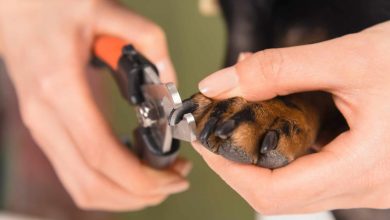Take This Quiz to Find Out if Your Dog Has Attachment Issues!

1. Introduction
Attachment issues in dogs can be difficult to identify and even more difficult to address. It is important for pet owners to be aware of the signs and symptoms of attachment issues in their canine companions so that they can take the necessary steps to ensure their dog’s emotional wellbeing. This article will provide an overview of attachment issues in dogs, including signs and causes, as well as a quiz that pet owners can use to determine whether or not their dog may have an attachment issue.
2. What are Attachment Issues in Dogs?
Attachment issues in dogs are characterized by an inability or unwillingness to form strong bonds with humans or other animals. Dogs with attachment issues may display signs of fear, aggression, anxiety, or depression when left alone or separated from their owners. These behaviors can be extremely distressing for both the dog and the owner and should be addressed as soon as possible.
3. Signs of Attachment Issues in Dogs
Signs that a dog may have an attachment issue include:
• Excessive barking or whining when left alone
• Destructive behavior when left alone
• Aversion to physical contact
• Aggression towards people or other animals
• Separation anxiety
• Disinterest in food and toys when left alone
• Difficulty sleeping without its owner present
4. Causes of Attachment Issues in Dogs
There are several potential causes for attachment issues in dogs, including:
• Lack of socialization during puppyhood
• Previous negative experiences with humans or other animals
• Poor training techniques from previous owners/caregivers
5. How to Address Attachment Issues in Dogs
It is important to address any attachment issues your dog may have as soon as possible, as these issues can lead to serious behavioral problems if left untreated. The following steps can help you address your dog’s attachment issues:
• Spend quality time with your dog every day – This is essential for building a strong bond between you and your pet. Take time each day to play with your pup, give them treats, go on walks together, etc.
• Provide consistent structure – Establishing a routine will help your pup feel secure and comfortable while they’re away from you. Make sure they know what is expected of them at all times (i.e., where they should sleep at night, where they should go potty, etc.).
• Seek professional help – If your pup’s behavior doesn’t improve after trying these steps on your own, it may be time to seek professional help from a veterinarian or animal behaviorist who can provide additional guidance on how best to address the issue(s).
6. Does My Dog Have an Attachment Issue? A Quiz
If you are concerned that your pup may have an attachment issue but aren’t sure how best to proceed, try taking this quiz! Answer each question honestly and then compare your answers against our suggested action plan below:
1) Does my pup bark excessively when I leave the house?
A) Yes B) No C) Sometimes
2) Does my pup display aggressive behavior towards people or other animals?
A) Yes B) No C) Sometimes
3) Does my pup show signs of separation anxiety (e.g., pacing back and forth)?
A) Yes B) No C) Sometimes
4) Does my pup seem disinterested in food/toys when I am not around?
A) Yes B) No C) Sometimes
5) Does my pup seem overly anxious when I leave the house?
A) Yes B) No C) Sometimes
Suggested Action Plan: If you answered “Yes” or “Sometimes” to any of these questions it is likely that your pup has some degree of attachment issue(s). We suggest taking the following steps: 1.) Spend quality time with your pup every day; 2.) Establish consistent structure; 3.) Seek professional help if needed; 4.) Monitor progress closely; 5.) Make adjustments as needed over time until desired results are achieved!
7 Conclusion
In conclusion, it is important for pet owners to be aware of the signs and symptoms associated with attachment issues so that they can take appropriate steps towards addressing them if necessary! With patience and consistency over time it is possible for most pups suffering from attachment issues to overcome them successfully!
8 Resources & Further Reading
> For more information about addressing attachment issues in dogs please refer to the following resources: • ASPCA – https://www.aspca.org/pet-care/dog-care/common-dog-behavior-issues • American Kennel Club – https://www.akc.org/expert-advice/training/how-to-deal-with-separation-anxiety-in-dogs/ • Veterinary Partner – https://veterinarypartner.vin.com/default.aspx?pid=19239&id=4951776


